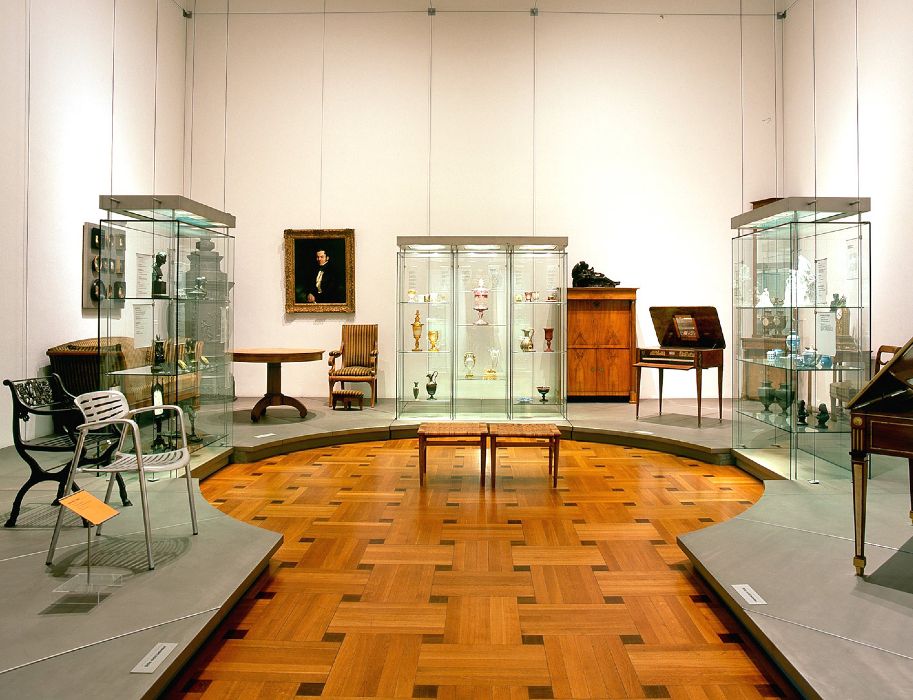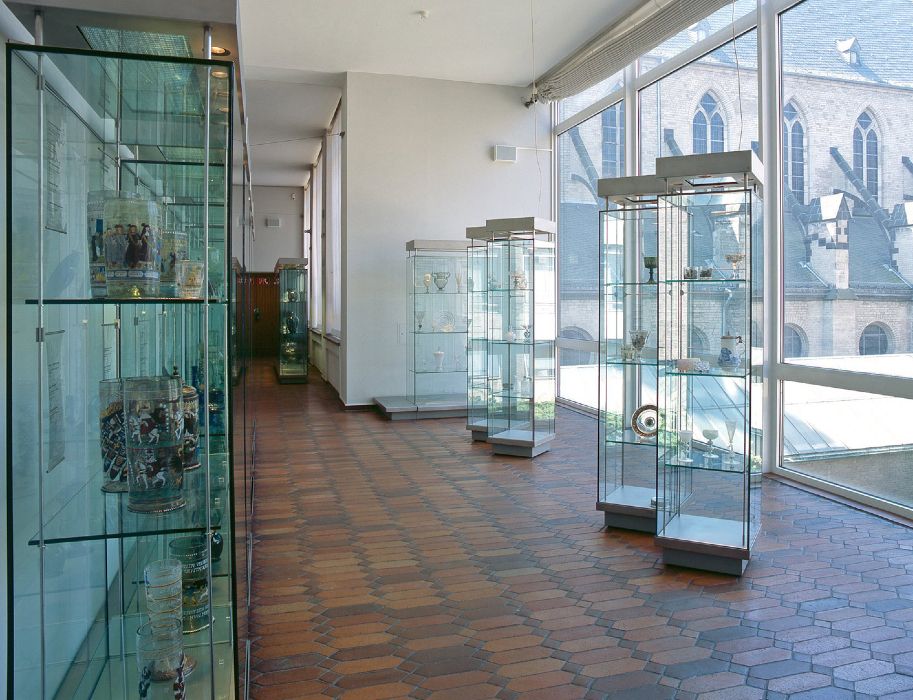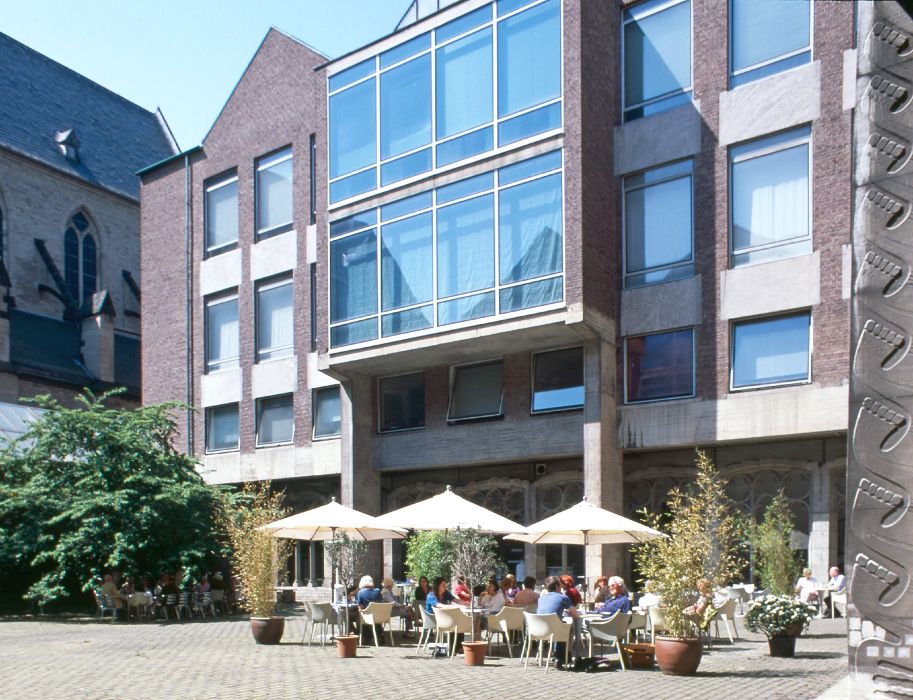or MAKK for short
Sink deep into the soft, thick leather and put your feet up as if you were sitting in a used baseball glove: Anyone who owns an Eames lounge chair will be familiar with the feeling of coziness that this design classic evokes. Here, form and function are combined in the most comfortable way - and so a piece of furniture rises from the world of pure functionality to the level of "applied art".
If you are interested in the design of everyday objects and their use, as well as modern design, then you can't go past the MAKK - because this Cologne museum is home to the most important European collection of applied art from the Middle Ages to the present day.
Numerous testimonies and exhibits from home decor, tableware, luxury objects and jewelry await you - a total of around 250,000 objects from the Middle Ages, Renaissance, Baroque and Rococo to Biedermeier, Historicism, Art Nouveau and Modernism.
Two focal points: historical collection and design department
Focus no. 1 of the permanent exhibition, the historical collection, is currently being redesigned - and is therefore unfortunately not accessible to visitors. However, focus no. 2, the design department with design classics and icons of the 20th century, is still open to you. If you are already familiar with these, there are further opportunities for an inspiring visit: numerous special exhibitions throughout the year, digital offerings and film screenings in cineMAKK provide new insights into the applied arts and crafts.
MAKK design department: unique collection and singular exhibition concept
Design and fine arts in dialog - with this special exhibition concept, the MAKK opened its new design department in 2008, which represents almost all renowned designers, producers and manufacturers: Charles and Ray Eames, Frank Lloyd Wright, Dieter Rams, Stiletto, Philippe Starck, Ettore Sottsass and Joe Colombo. On display are everyday objects such as vessels, household appliances, services, cutlery, cameras, furniture, telephones, radios, lamps and televisions. The special feature: They are always placed in the context of paintings or sculptures by important international artists of the time such as Piet Mondrian, Wassily Kandinsky, Jesús Rafael Soto or Victor Vasarely.
Our relaxation tip: the inner courtyard of the museum
An oasis of calm awaits you in the MAKK courtyard with its fountain by Ewald Mataré in Cologne's affable city center. For a break from all the visual impressions and objects. Contemplation is not excluded, especially in the summer months.
Museum of Applied Arts: its history
The Museum of Applied Arts has existed since 1888 as the second oldest museum in Cologne, after the oldest, the Wallraf-Richartz-Museum. The exhibition is based on the collections of the scholars Ferdinand Franz Wallraf and Matthias Joseph de Noël, which have been continuously supplemented by donations - above all from the citizens of Cologne. The museum building on Hansaring was destroyed during the Second World War - but fortunately the collection was saved - and finally found its new home in the heart of the city, built by Rudolf Schwarz and Josef Bernhard in 1957. This building, which was controversial at the time, is now one of Cologne's architectural icons.
Museum building - a synthesis of tradition and modernity
The MAKK was built directly next to one of Cologne's oldest churches and its ground plan and appearance with its inner courtyard refer to the former Minorite monastery complex, which was demolished in 1855. Parts of the old cloister were integrated into the new building.
Simple and closed on the outside, the interior of the museum has an exciting cathedral-like effect with a main hall, open staircase and galleries leading to the bright exhibition rooms. Before entering, however, you must humbly walk through the low entrance foyer - the museum thus visualizes an inspiring bridge between tradition and modernity.



